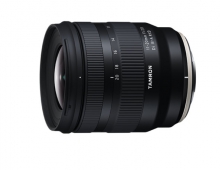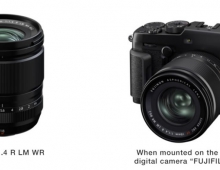
Fujifilm to Show MicroFilm Archive System at ARMA 2006
Fujifilm U.S.A. will demonstrate the new Fujifilm Document Archive System AR-1000 microfilm-based recording solution in the Fujifilm booth (#477) at the ARMA Show next week.
The ARMA Show is taking place at the San Antonio Conference Center in San Antonio, TX, October 22-25.
 Introduced in Japan in 2004, the AR-1000 utilizes an LED exposure system to record documents onto 16mm format film. The slower film speed and finer grain of the media result in higher resolutions than other similar digital output devices.
Introduced in Japan in 2004, the AR-1000 utilizes an LED exposure system to record documents onto 16mm format film. The slower film speed and finer grain of the media result in higher resolutions than other similar digital output devices.
Using Fujifilm's software (Version 3.0), documents are either scanned from paper copies, or transferred to the Fujifilm AR-1000 as TIFF files, which are indexed to the computerized imaging system. These files are imaged onto the AM-66 film at speeds of up to 130 pages per minute (letter-size portrait at 300 dpi). The software also allows jobs to run concurrently for editing and recording data, offering efficient total throughput, from data checking to editing and recording.
Information recorded on the Archive Media can be read on any traditional microfilm reader. The new Version 3.0 also offers an index file that contains the roll number, frame number, and file name, allowing companies to better organize and access the data once it is stored.
The AR-1000 utilizes Fujifilm Archive Media AM-66 microfilm, a product developed by Fujifilm engineers to accurately reproduce documents on a format expected to last 500 years based on ISO standards. This film was developed specifically for the AR-1000, with resolution as high as that found in traditional source document (analog) microfilm, in order to capture and miniaturize documents containing detailed characters and signatures. Exposed AM-66 film requires separate processing.
Today's records management and compliance regulations require management of both analog (paper) documents as well as those stored digitally. The Fujifilm AR-1000 records both digital files and scanned analog documents directly to microfilm, providing a safe, long-term archive solution for sensitive and/or valuable information assets.
Because digitally archived data can be susceptible to damage and corruption caused by weather, viruses or simple human error, recording critical document information on "eye-readable" formats, such as microfilm, is rapidly gaining in popularity in the U.S. Film-based storage is chemically fixed on a cellulose base ? which makes it difficult to alter without detection ? and is "technology independent" when it becomes necessary to recover or reproduce stored documents.
The Fujifilm AR-1000 Document Archive System lists for $54,995 and includes the recorder, console PC, monitor, PC software, 2 film magazines, 20 rolls of AM-66 film, installation, training and a one-year extended warranty. Individual components can also be purchased separately. The system and supplies are available through Fujifilm Document Products Group resellers. To learn more about the Fujifilm AR-1000 or the full line of Fujifilm data and document storage solutions, go to www.fujifilmusa.com/AR-1000.
 Introduced in Japan in 2004, the AR-1000 utilizes an LED exposure system to record documents onto 16mm format film. The slower film speed and finer grain of the media result in higher resolutions than other similar digital output devices.
Introduced in Japan in 2004, the AR-1000 utilizes an LED exposure system to record documents onto 16mm format film. The slower film speed and finer grain of the media result in higher resolutions than other similar digital output devices.
Using Fujifilm's software (Version 3.0), documents are either scanned from paper copies, or transferred to the Fujifilm AR-1000 as TIFF files, which are indexed to the computerized imaging system. These files are imaged onto the AM-66 film at speeds of up to 130 pages per minute (letter-size portrait at 300 dpi). The software also allows jobs to run concurrently for editing and recording data, offering efficient total throughput, from data checking to editing and recording.
Information recorded on the Archive Media can be read on any traditional microfilm reader. The new Version 3.0 also offers an index file that contains the roll number, frame number, and file name, allowing companies to better organize and access the data once it is stored.
The AR-1000 utilizes Fujifilm Archive Media AM-66 microfilm, a product developed by Fujifilm engineers to accurately reproduce documents on a format expected to last 500 years based on ISO standards. This film was developed specifically for the AR-1000, with resolution as high as that found in traditional source document (analog) microfilm, in order to capture and miniaturize documents containing detailed characters and signatures. Exposed AM-66 film requires separate processing.
Today's records management and compliance regulations require management of both analog (paper) documents as well as those stored digitally. The Fujifilm AR-1000 records both digital files and scanned analog documents directly to microfilm, providing a safe, long-term archive solution for sensitive and/or valuable information assets.
Because digitally archived data can be susceptible to damage and corruption caused by weather, viruses or simple human error, recording critical document information on "eye-readable" formats, such as microfilm, is rapidly gaining in popularity in the U.S. Film-based storage is chemically fixed on a cellulose base ? which makes it difficult to alter without detection ? and is "technology independent" when it becomes necessary to recover or reproduce stored documents.
The Fujifilm AR-1000 Document Archive System lists for $54,995 and includes the recorder, console PC, monitor, PC software, 2 film magazines, 20 rolls of AM-66 film, installation, training and a one-year extended warranty. Individual components can also be purchased separately. The system and supplies are available through Fujifilm Document Products Group resellers. To learn more about the Fujifilm AR-1000 or the full line of Fujifilm data and document storage solutions, go to www.fujifilmusa.com/AR-1000.





















